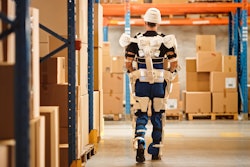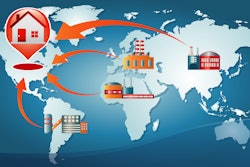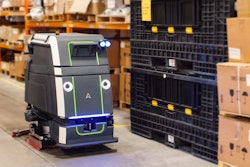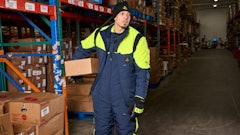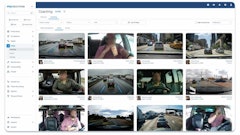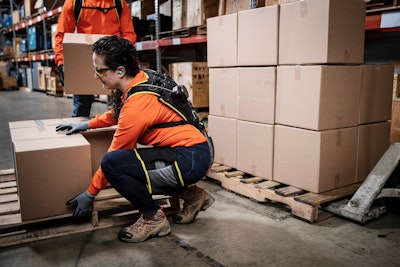
The 2020 holiday shopping season broke records. The 2021 season shattered them.
Compared to 2020, last year’s number of online shoppers during November and December increased by almost 1 billion distinct individuals to around 2.54 billion. And, while online shopping makes life easier for consumers, the increased number of purchases resulted in a large amount of strain being placed on warehouse and logistics workers.
Even before this increase in internet shopping, the holiday season was difficult for workers. One global e-commerce company reported the weeks between Black Friday and Christmas in 2019 saw a spike in weekly injury rate about 2.5 times the annual average.
Now is the time to start preparing for another potential holiday shopping surge later this year. The good news is there are options available that can help protect your workforce, especially during demand challenges that are sure to come in the final months of 2022.
Thankfully, facilities can prepare for demand surges and help reduce the risk put on workers at the same time with workforce wearables.
Tangible assistance for workers without slowing them down
Workforce wearables, including exosuits and exoskeletons, are a new class of device that provide a lifeline of vital physical assistance to employees on the floor. There are back-assist models that are especially valuable in supporting those who frequently lift and bend during a shift, such as warehouse and logistics workers. This assistance both makes their jobs easier and helps reduce the risk of injury.
Some of these workforce wearables, particularly textile-based exosuits, weigh just a few pounds but greatly reduce the strain off the backs and shoulders of warehouse workers, all without motors or batteries. This can lead to a reduction in fatigue, which leads to both improved productivity and decreased injury risk.
Because workforce wearables are still relatively new to the market, there are some questions about the impact they actually have on workers. However, there is a new breakthrough assessment tool built by engineering, rehabilitation and ergonomics experts that can quantify the effect of exoskeletons on injury risk in a matter of minutes.
Back pain is a serious problem on the job
Back pain in the United States accounts for more than 264 million lost work days per year. Additionally, the Center for Disease Control and Prevention (CDC) reported that back pain is the most prevalent work-related health problem, costing employers nearly $1 billion per week.
A major part of the problem is the frequent forces and awkward postures workers’ spines must endure during all that bending and lifting. That wear and tear really adds up physically and can lead to the development of work-related musculoskeletal disorders (WMSDs), which can put workers out of commission for days, weeks or even months at a time. That’s especially troubling for operations that need all-hands-on-deck during a holiday rush.
With workplace wearables, employers can reduce the risk of injuries, boost employee morale, increase productivity and future-proof their workforce in a single move.
Don’t sacrifice comfort for better performance
Workforce wearables can offer assistance, but not all wearables are created equal and not all are perfect for every job. Providing workers assistance is important, but not if it constantly gets in the way and slows workers down – a challenge many early exoskeletons on the market faced and some continue to face today.
However, modern workplace wearables don’t always look like robotic exoskeleton frames straight out of science fiction. Some exosuits are built in a more human-centric way, so users can maintain full freedom of movement. That type of mobility can help employees keep up with demand while staying better protected.
A key component of practical workforce wearables is that they provide assistance when you need it and get out of your way when you don’t. The job of a modern logistics worker is usually very dynamic, and any exosuit needs to have the ability to turn assistance on and off easily to give workers full freedom of movement while wearing the suit.
Prepare for online surges
A key for introducing any new tool, especially one as new as an exosuit, is to have a proper implementation plan.
Companies must allow time for testing with pilot groups to identify and address any issues before rolling the suits out to broader teams. Robust training and support programs for employees and managers alike are also key throughout this process. Full support through that rollout is a key element to look for when selecting an exosuit provider.
For operators considering workforce wearables to help protect their employees, now is the time to get ahead of the game and start exploring options. By enrolling in an exosuit pilot program, you’ll have plenty of time to develop a solid plan, see if workforce wearables are the right fit for your team, train workers, get them acclimated to the suits and put an exosuit implementation program in place. It’s not ideal to be testing out new equipment or processes in the middle of a seasonal rush.
Online shopping trends indicate that 2022’s holiday season will be just as busy as this past year’s, if not more so. Investing early in exosuits can pay dividends and come the holiday rush, your workers will be ready.




